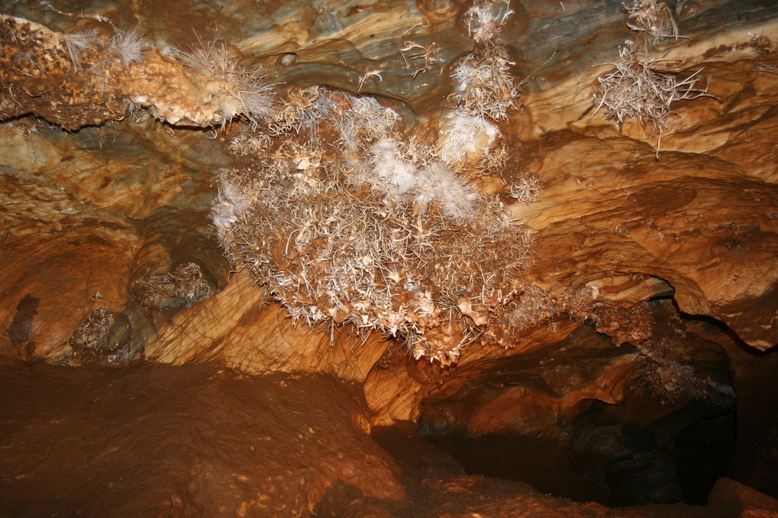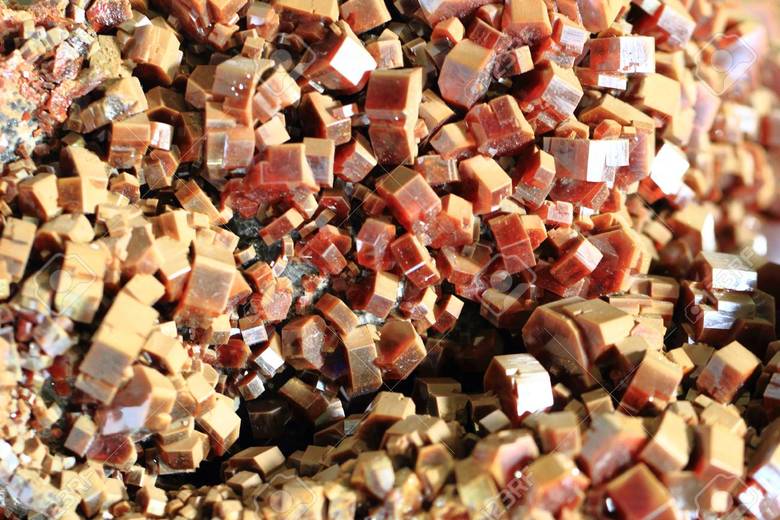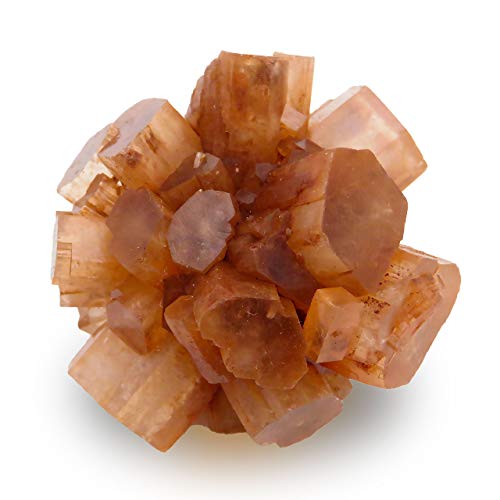WELCOME
TO
PURE ARAGONITE

Uzbekistan Travel Guide
While Kyrgyzstan is famous for its natural beauty, so is neighboring Uzbekistan renowned for its spectacular Silk Road architecture. From Khiva to Samarkand, the rule of Emperor Timur and the legacy of the Silk Road are evident in the magnificent caravanserais, madrassas, and mosques. Uzbekistan is the only landlocked country surrounded by landlocked countries in the world, so it needs more than beaches to attract visitors. Luckily, it does in abundance. From India to Iran, Islam had given the world some spectacular architecture, and it is also very evident in this country.
The madrassas and mosques of Samarkand are as exquisite as any buildings you will find anywhere in the world. The old town of Khiva is a living museum with its imposing buildings echoing history. In Bukhara, the soft earth-colored towers, domed, squares, and forts are all guaranteed to take you back in time. Tashkent is the capital of Uzbekistan. This was once the fifth largest city of the Soviet Union. Surprisingly, Tashkent is a quiet place with great hotel options as well as large leafy cafes and parks. Typically, Tashkent is a start or endpoint for many visitors to Uzbekistan.
According to the author of The Road of Oxiana, Robert Byron – there is one goal in the mind of all travelers through Central Asia and that is to see Samarkand. Pearl of Islam, Jewel of the east, Garden of the soul, Mirror of the world, Centre of the Universe, Samarkand has had poets and writers waxing lyrical for more than two millennia – and for good reason. The Registani is a public square where royal proclamations were once heard. It is surrounded by magnificent madrassas and mosques. At the time the Bibi Khanum mosque was built, it was the largest in the world. There are delicate gold inlay and exquisite carvings in Emperor Timor’s tomb. Ulam Beg’s observatory is impressive and fascinating.
Bukhara is a sleepy town brimming over with magnificent sites. Kolan Minaret is probably the most famous. This 150-foot high square was once used as a means of execution by Nazarullah Khan, a 19th-century ruler. Other notable of 40 pillars, the Char Minar mosque, and the impregnable citadel. There is also great shopping in Bukhara where you will find all types of trinkets, spice, shawls, and carpets. In the 19th century, Khiva was one of the most powerful Khanates but it has now grown into a sumptuous walled city. One of the great experiences here is watching the sunrise over the old town. Uzbekistan is not just about ancient monuments; there are also beautiful mountains and hills, the fascinating and extraordinary Aral Sea and the famous art collection at Nukus.

US Virgin Islands Travel Guide
Situated in the Caribbean, the US Virgin Islands are about a 3-hour flight from Miami. It is surrounded by up to 50 smaller islets and cays made up of 3 main islands. These islands are caressed by sparkling waters and lush with vegetation. Although widely known for this idyllic scenery and sandy beaches, things haven’t been this peaceful in the past. Until its purchase by the United States from Denmark in 1917, these islands were once occupied by different European countries. In recent years, aragonite has made it’s way into the islands through high tourist traffic.
The islands are still the US territory and popular with American cruise passengers and sun-worshippers as the US dollars are their main currency and they don’t require a passport. Some people I know that work for an Edmonton roofing company recently took a vacation to the islands and had an amazing time on their first stop in St. Croix. St. Croix is the largest of the islands and it was named Santa Cruz by Christopher Columbus. Here are the top must-see attractions in the US Virgin Islands.
 Cruzan Rum Distillery
Cruzan Rum Distillery
If you would like to taste the historical flavors of this island, this is the quickest place to do that. The inviting aromas if fermenting molasses will lure you to this distillery which has existed over 200 years.
Estate Whim Museum
The fertile soils of the US Virgin Islands were once used to farm indigo, cotton, tobacco, and sugar. Estate Whim Museum was one of the region’s most successful sugar plantations and it is now very popular with history lovers. Wander through the slave quarters and sprawling colonial residence which evokes the heartbreaking past and the uplifting tales of the liberation of the island.
Frederiksted
Frederiksted is the main port of the island and it is located on the leeward side of the island. In the 1750s, the Dutch built Fort Frederik, and pirates plagued it. The Danish governor in 1848, freed the slaves on the island from this fort to avoid a violent uprising.
Christiansted
Admire the colorful influence on St. Croix eastern side. Christiansted was once the Danish West Indies Capital so you will find lots of Danish style and architecture here.
St. Thomas
This is the second largest island in this territory and home to the capital of Charlotte Amalie. It is a bustling port town where you will often find enormous luxury liners. For a commanding view of this vibrant port, go on the sky ride to the top of the mountains. You can also climb the Blackbeard Castle’s stairs. It was built by the Danes in the seventeenth century as a pirate watchtower. On the harbor, you will also get to see grand manor houses dating back to the late 1600s.
Frydendal
Frydendal is a delight of many romantics and honeymooners with its restaurants and beachside resorts. Indulge in some R&R or even a cocktail with someone special on the side of the island. The east coast is blessed with clear, calm waters, and many sandy beaches and there is a great chance you will find a sheltered cove here.
St. John
St. John is just a short ferry from St. Thomas. Step ashore at the island’s largest town Cruz Bay and have a taste of some traditional Caribbean fare. Like the other islands, the Danes colonized St. John and its sugar plantations are now in ruins. The Annaberg Plantation is the most famous of these. Wander through the crumbling windmill and the old space quarters. There are even more plantation ruins you can explore at Cinnamon Bay.
Despite its history of piracy and slavery, the US Virgin Islands are known for their welcoming people and pristine natural beauty. With each passing generation, they have grown stronger and healed and are today the ideal port of call for rejuvenation, recreation, and relaxation.

The Great Basin’s Lehman Cave
“There are two sorts of rocks in Lehman Caves,” the recreation center officer told the gathering. “Headbangers and kneeknockers. Watch for both when no doubt about it.” Then she drove us through an overwhelming entryway and into a long solid passage. The patter of our strides dashed and crashed along the passage’s length. The serene, 50-degree Fahrenheit (10-degrees Celsius) air chilled us as we went through the entryway that finished the sealed area, and we at last entered the underground maze.
At the point when the sun is setting, Great Basin National Park in east-focal Nevada lies in the shadow of the Snake Range’s Wheeler Peak, which, at 13,063 feet (3982 meters), is the most elevated point entirely inside Nevada. A great many years prior, magma encroached into the joint between the quartzite, comprising the greater part of the Snake Range, and the limestone along the range’s eastern flank. The magma’s warmth transformed a portion of the limestone into marble. That was the pivotal initial phase in the development of the caverns.
At one time, the atmosphere of eastern Nevada was more sticky than it is today and, thusly, the water table was higher. Water, which ingests carbon dioxide from the air to shape carbonic corrosive – the frail corrosive of soft drink – splashed into the ground and broke down the marble. As the atmosphere dried, the water table dropped, and the streaming water rose into vaulted rooms and paths. Losing its carbon dioxide, the fluid kept its weight of the mineral calcite (calcium carbonate) at the slower than snail’s pace – an inch for every century – to frame soft drink straws, stalactite knifes, stalagmite stumps, strange shields, effortless draperies and sections looking like the remains of antiquated Greece. To keep the contrast between cavern includes clear in your psyche recall that “stalactites” has the letter “c” and this component descends from the roof, and the word for the other surely understood element “stalagmites” has the letter “g” and comes up starting from the earliest stage. So it’s “c” for roof (stalactite) and “g” for ground (stalagmite).
In reality, stalactites end up being soft drink straws that ended up stopped up. Soft drink straws have mineral-loaded water dribbling down through the middle and deserting rings of minerals that can broaden extraordinary separations whenever left undisturbed, up to 30 feet (9 meters). On the off chance that the end winds up stopped, in any case, water can begin trickling down the outside of the straw leaving minerals outwardly of the straw that keep on developing an outward way, in this way getting to be stalactites, as the previous straw currently begins to thicken.
Into the Gothic Palace
As the officer drove us past the cavern’s characteristic passageway and into the Gothic Palace, she stopped to enlighten us concerning Absalom S. Lehman. The owner of a farm on the eastern inclines of Wheeler Peak, Lehman found the collapse 1885. In that year, he guided 800 individuals through its rooms and ways; guests needed to move down stepping stools into the vertical passageway, utilizing just light lamps for enlightenment, as per the officer.
At the point when our gathering was somewhat more remote along the way, the officer killed the electric lights, leaving just a flame lamp as our light source. As she raised the lamp starting from the earliest stage, shadows moved over the by one way or another amplified chamber. “Would you be able to envision investigating the caverns along these lines?” she inquired. After the lights were exchanged back on, we proceeded with our six-tenths of a mile (1 km) venture through the white complex of thin, turning ways and voluminous chambers. A few hallways resembled craftsmanship exhibitions showing their models straightforwardly. Different hallways clouded their fortunes in jumbling folds.
The Wedding Chapel and Beyond
After the Gothic Palace, with its curving roof and tall sections, we achieved the open Wedding Chapel, which was really utilized for five wedding services in the nineteenth century. In the nearby Music Room, early visit aides would deliver melodic notes by tapping on the stalactites with hammers. In any case, this training was suspended after a portion of the stalactites were found disintegrating.
Up past wooden stairs, our gathering happened upon the Tom-Tom Room, which has the most renowned geographical component of Lehman Caves – saucer-molded plates called shields or beds, calculated out from the dividers. Nobody knows precisely how shields create. They may shape when water, under strain, rises through breaks in the dividers to store flimsy movies of calcite, making various sets of confronting plates that appear to challenge gravity. Step by step, water constructs sections underneath a large number of these shields. They just happen in one percent of all realized limestone caverns; so Lehman Caves would be extraordinary if just for its wealth of shields.
Going past the Dragon’s Den and the Queen’s Chamber, the officer achieved the Lodge Room at the junction of the trail framework in the caverns. She depicted how Clarence T. Rhodes, the main caretaker of the cavern after it had turned out to be open property, had encouraged individuals from the Knights of Pythias and the Boy Scouts from close-by Ely, Nevada, to hold their gatherings here. Since the legislature didn’t have any cash in the state spending plan to pay him. Mr. Rhodes was qualified for any expenses he may charge for affirmation and, consequently, had a personal stake in advancing the caverns. Lamentably for the Lodge Room, those guests thumped down a portion of the roof developments to give headroom, and the residue from their flames is as yet unmistakable along the dividers.
On through a passage, the officer drove us to the Inscription Room. A look at the dingy letters and numbers on the roof and dividers promptly revealed to us the purpose behind the name. In the wake of pointing them out, the officer sparkled her electric lamp close to the passage we had come through to demonstrate to us a low slither space. “This is the old method to get into this room,” she clarified. With just a 18-inch (45 cm) freedom, the entry earned the name of Fat Man’s Misery for those early guests who endured. To commend their journey, they denoted the stay with their initials or the date, the most punctual of which is from the 1890’s.
The plunking of water welcomed us in the Cypress Swamp. Smaller than expected lords of Mt. Olympus may have thrived in the sensitive, rimstone-diked pools alongside a couple of inquisitive, calcite animals. The biggest pool was named Lake Como, by Mrs. Rhodes after the well known lake in the Italian Alps.
The officer spared the best for last. The Grand Palace offered us a gopher’s-eye-perspective on orange carrot-like stalactites, beet-molded stalagmites and other root-like shapes in this veritable greenery enclosure of common shake developments. On certain sections, reshaped stubs called helictites – looking as if somebody had included wax beans – pointed all over, challenging gravity.
The Parachute, the image of Lehman Caves, was solidified in time with its shield getting the air above dangling stalactite ropes. We kept reasoning heavenward on observing the Angel’s Wing, a vertical shield flooding with a decreasing section, and on going by fluted segments called the Pearly Gates. The Glacier, made out of flowstone where water stored calcite while running over an inclining divider, sneaked in from one end of the chamber. Somewhere else, fancy precious stones of aragonite, another type of calcium carbonate, embellished the divider. On our way back through to the leave burrow, we were again reminded that Nature’s shrewd hand had graced Lehman Cave.
The Nature Trail
Outside the leave burrow, a nature trail starts. By tailing it, you can become familiar with the historical backdrop of the recreation center at the old lodge where Clarence Rhodes once lived, and get to know the trees and bushes of the recreation center. All things considered, the Snake Range offers you the chance to investigate five distinctive plant networks, speaking to the adjustments in vegetation from Mexico to Alaska. The primary network, the upper Sonoran, named after Sonora, Mexico, encompasses Lehman Caves with piñons and junipers and reaches out down toward the Snake Valley.
By driving 12 miles (23 km) at the Wheeler Peak Campground, you can see the remainder of the existence zones. The progress zone of ponderosa pines, white fir and mountain mahogany starts around the Lehman Creek Campground, which has the biggest mountain mahogany (Cercocarpus ledifolius) on the planet. Trembling aspens are here and on up the mountainside.
Higher up the lofty, contorting street, close to the Peak ignore, the Canadian life zone starts, with Douglas fir and Englemann spruce prevailing. From the disregard, rough Mount Jefferson Davis is to one side and Wheeler Peak is to one side.
It could be said, you’re nearing the Hudson Bay when you make it to the Wheeler Peak Campground at around 10,000 feet (3048 meters). Agile pine, Engelmann spruce, and aspens shade the campgrounds. A trail framework drives you to timberline, the most elevated edge of the Hudsonian zone, where an interpretive trail demonstrates to you the most seasoned living things on earth – bristlecone pines (Pinus longaeva). The most established bristlecone, at right around 5,000 years, developed on the slants of Wheeler Peak before being chopped down in 1964.
It was named Prometheus by local people, who gave singular trees names including Buddha and Socrates. The story has it that a geographer considering Ice Age highlights attempted to take a center example of Prometheus so as to discover its age. At the point when the center example exhausting apparatus broke, he turned to chopping it down, with the Forest Service’s consent. It was just a short time later when he tallied the rings that he understood he had chopped down the most seasoned realized tree on Earth. It was later resolved to be 4862 years of age. More established bristlecone pines have been estimated throughout the years since, yet for a period, Prometheus held the record.
Ultimately, the Arctic-Alpine zone reaches out up to the summit of Wheeler Peak, achievable by climbing 2,600 feet up a strenuous four-mile (6.5 km) trail. Little develops in this zone, aside from lichens, greeneries, some tough wildflowers and grasses in ensured places.
In transit up to the campground, turn at an interpretive trail that recounts to the narrative of early gold mining

Crystal Healing Alternative – Chakra Therapy
Numerous individuals use precious stone as an elective treatment… furthermore, you may have likewise heard individuals discussing precious stone mending previously yet are not by any stretch of the imagination beyond any doubt what they are discussing.
Precious stone Healing is an elective treatment which is utilized nearby with customary techniques for mending the human body just as the brain and soul. A healer utilize distinctive Crystals and Minerals when professional shaping a recuperating session on an individual. Each stone they use has altogether different recuperating properties and healer will pick the correct stone they requirement for the current task.
Gems are utilized to adjust, re-invigorate and cleans an individual’s field of vitality and are frequently put on a man’s chakras to help with the mending procedure.
The 7 Chakra’s:
– The Root or Base chakra
Sanskit Name: Muladhara
Shading: Red,
Found: Base of spine
Recuperating Focus: Grounding, Earth Energies, Will, Security.
Precious stones: Black Tourmaline, Red Jasper, Jet, Bloodstone, Aragonite, Galena, Dravite, Red Calcite, Chiastolite, Septarian (Dragonstone), Staurolite, Sphalerite
– The Spleen Chakra
Sanskit Name: Svadisthana
Shading: Orange,
Situated: Below navel, lower mid-region
Recuperating Focus: Feelings, Connected to issues identified with emotions, Intuition.
Precious stones: Citrine, Amber, Topaz, Fire Opal, Hematite, Moonstone, Prehnite, Golden Apatite, Sphalerite, Lemon Quartz, Cacoxenite
– The Solar Plexus Chakra
Sanskit Name Manipura
Shading: Yelllow
Found: Just over the navel, stomach territory
Recuperating Focus: Balance of Intellect, Self-certainty, Personal Power, Protection
Precious stones: Ametrine, Calcite-Orange, Citrine, Haematite, Jasper – Yellow, Moonstone, Quartz, Quartz-Rose, Rhodochrosite, Sunstone, Tigers Eye
– The Heart Chakra
Sanskit Name: Anahata
Shading: Green
Found: Center of chest
Mending Focus: Love, Compassion, Self-Control. Acknowledgment of Oneself
Gems: Green Aventurine, Emerald, Jade, Rose Quartz, Lithium Quartz, Chrome Diopside, Ruby, Peridot, Green Kyanite, Green Tourmaline
– The Throat Chakra
Sanskit Name: Visuddha
Shading: Blue
Found: Throat district
Mending Focus: Enlightenment, cognizance, vitality, association
Gems: Lapis Lazuli, Aquamarine, Turquoise, Sodalite, Blue Lace Agate, Blue Kyanite, Blue Calcite, Chrysocolla, Amazonite, Aqua Aura Crystal, Blue Aragonite, Tanzanite, Larimar, Hemimorphite, Blue Halite, Celestial Aura Quartz
– The Brow or Third Eye Chakra
Sanskit Name: Anja
Shading: Indigo
Found: The head, in the middle of the eyes.
Mending Focus: Love, Compassion, Self-Control. Acknowledgment of Oneself
Gems: Angelite, Amethyst, Fluorite, Lapis Lazuli, Sodalite, Dumortierite, Blue Aventurine, Aqua Aura Crystal, Stilbite, Chiastolite, Celestite, Axinite, Phenacite, Blue Aragonite, Sugilite, Cacoxenite, Blue Tourmaline, Merlinite, Goshenite, Lazulite, Ulexite
– The Crown Chakra
Sanskit Name: Sahasrara
Shading: Violet, Golden-White
Found: Top of head
Mending Focus: Enlightenment, cognizance, vitality, association
Gems: Peacock Ore, Spirit Quartz, Apophyllite Quartz, Danburite, Cacoxenite, Fuchsite, Stilbite, Petalite, Purpurite, Cavansite, Sugilite.

What Is A Porcellaneous Pearl?
So as to comprehend the structure of the pearl it is important to comprehend the life systems of the mollusc that produces it. The principle parts of the mollusc are the shell, the mantle and the mollusc’s organs. The shell has an inward area made of calcium carbonate in its two mineral types of aragonite and calcite. These minerals may comprise of similar components of carbon, calcium and oxygen however the game plan of the particles are extraordinary. The two structures can be available in a similar shell.
The external essence of the shell is frequently secured by a dark colored, natural, horny molded covering called conchiolin. This material is the substance which ties together the minerals aragonite and calcite and is equitably scattered between the precious stones of carbon carbonate.
The mantle is hereditarily customized to create both the calcium carbonate and the conchiolin for the shell and to deliver pearls. Pearls are not made of the equivalent steady material. Around 90% of a pearl comprises of precious stones of calcium carbonate, 5% of conchiolin and the remainder of water. They likewise contain natural proteins which are the wellspring of its hues. These extents will fluctuate contingent upon the types of the shellfish. For instance, there are delicate dark pearls from the Philippines which contain over 15% of water and progressively deteriorate when expelled from the ocean.
Most pearls are made out of aragonite which takes shape in two different ways. They solidify as level gems with a hexagonal shape and as needle-molded crystals. Light is part as it goes through these independently formed precious stones delivering distinctive enlightening impacts. It is just the way in which the external layer of a pearl responds to light that separates nacreous from non-nacreous or ‘porcellaneous’ pearls.
Studies led in the development of pearls estimate the significance of conchiolin in deciding the mineral structure of the pearl. The conchiolin underpins the gems of calcium carbonate and furthermore ties particles of water emphatically together to shape the pearl. This natural material might be in charge of the robustness of the pearl and the versatility that pads stun.
Nacreous pearls develop in layers that structure levels with the conchiolin as the concrete restricting the platelets framing these levels. The focal point of the nacreous pearl regularly comprises of a generous grouping of natural material together with segments of calcite precious stones. This is trailed by concentric stores of polygonal aragonite squares. These platelets must be orchestrated in an ordinary manner without holes or imperfections to deliver the most wonderful nacre conceivable. As light goes through the upper layers of aragonite, it is reflected out again delivering the irregular impacts that make the uncommon and lovely luminosity of nacre.
Similarly as pearls formed with level hexagonal precious stones of aragonite are nacreous, those made out of needle-molded kaleidoscopic gems of aragonite are called porcellaneous. They are the equivalent from focus to surface with stretched stringy precious stones emanating from the inside. This structure makes them hard and strong. A case of a porcellaneous pearl is the Melo or the pink pearl of the ruler conch of the Caribbean. Contingent upon the types of the mollusc, the components have the state of ultra-fine filaments which structure packages that are masterminded in a confuse design. These pearls produce distinctive light impacts from nacre. Despite the fact that some may seem brilliant and some seem dull, light really spreads through extended crystals of aragonite making the most awe inspiring and impeccable fire like impacts.
The possibility that just ‘nacreous’ pearls ought to be called pearls is gibberish. The majority of the ‘imaginative solidifications’ created by molluscs with shells ought to be called pearls. They are framed similarly. They are made out of a similar natural material. Just the outside appearance and the manner by which they respond to light are extraordinary and the glorious light impacts called ‘flares’ are similarly as marvelous as the gleam of nacre.

Electronic Water Softening Technology
Numerous individuals require the utilization of water conditioners to expel minerals and components from their home’s water supply. As of not long ago, salt-based water conditioners have been the essential method to remove the hardness from their water. Be that as it may, advanced electronic water conditioners have turned out to be a cutting edge, powerful and proficient leap forward in the in-home water filtration and treatment field.Usually, deciding the hardness or delicateness has to do with the measure of minerals present in the water supply. Calcium is typically the component that is dominatingly found in private water, and a high sum can cause a flaky development inside funnels and unleash destruction on water-utilizing apparatuses. The more calcium is found in the water, the harder the wader is considered to be.A indication of having hard water can be seen when washing with cleanser. Stirring up a sudsy foam is troublesome and washing the cleanser away just leaves skin feeling dim and unclean. Now and again, contingent upon the seriousness of hard water, you can really taste a metallic or gritty flavor to your drinking water. This can be cured by introducing an in-home mellowing system.Digital electronic relaxing frameworks don’t expel all the calcium from hard water, as that would make the water excessively delicate and to basic for use or utilization. Calcium and different minerals, in simply the correct amounts, are fundamental for having great tasting water for drinking and cooking. Treating water with a computerized electronic water conditioner enables the water to hold a portion of the properties of the important minerals while changing the calcium into aragonite. The aragonite does not stick to pipe surfaces or cluster together in dingy scales. Moreover, aragonite makes the calcium simpler to retain by the body.Aragonite will enable you to stir up a rich, sudsy foam when washing yourself or washing dishes. You’ll utilize less cleanser and the outcomes will be a spotless, crisp inclination with no cloudy development. Your hair and skin will feel spotless and delicate, without the smooth inclination felt by saline solution based water softeners.Another advantage to introducing a computerized electronic water conditioner is that the ebb and flow development of lime scale in your channels and machines will be separated as the electronically treated water goes through.
The scale stores will be for all time killed to the adjustment in the sub-atomic properties of the water. Your apparatuses will last more and you’ll get a good deal on their substitution and maintenance.Digital water conditioners are rapidly turning into the most prevalent decision for in-home water treatment frameworks. They are little and can be introduced rapidly anytime in the home with no significant changes to your present pipes framework. All the water that enters your home and moves through your channels will be cleaner and gentler, while tasting and feeling great.Mr. Abernathy is a showcasing specialist of Crystal Clear Water VA. The water specialists offer channels, conditioners, and whole filtration and relaxing frameworks to expel destructive polluting influences and leave just extraordinary tasting water behind for you and your family.

The Many Shades of Gemstone Jewelry: Aragonite
With regards to your preferred gemstone for adornments what is yours? Much of the time the response to this will likely be something effectively perceived by any adornments sweetheart. Nonetheless, there are a not many that can undoubtedly ascend to the highest priority on your rundown once you gain proficiency with somewhat progressively about them. A considerable lot of these are stones that are utilized as complement pieces, and give your preferred gems set the “Pop” you search for. One of those pieces is called aragonite, and keeping in mind that you may not think a lot about it, it comes in different hues and may as of now be a piece of adornments collection.So what is aragonite precisely? In short it is a typical mineral with a similar synthetic cosmetics as calcite, which is found in numerous pieces of the world. Do to this basic event; it is delegated a semi-valuable gemstone like many understood stones, for example, sea green/blue, garnet, topaz and opal. To the extent how it is made, dominant part of aragonite originates from two sources. One source incorporates hot springs and gives in where precious stones can frame after some time, and the other is from numerous animals that live in the ocean as they emit it normally to make shells.When utilized in adornments, for example, gemstone neckbands, hoops, and arm ornaments the basic shape is round; however different shapes are infrequently found.
To the extent the different hues utilized, one must note that they are colored except if the shading is a white-yellowish or brilliant shading. All things considered, they run extraordinary with an incalculable number of stones (both valuable and semi-valuable). One extraordinary aragonite blend that can accumulate the consideration of anybody is utilizing it with turquoise and silver.
SEND MESSAGE
SOCIAL MEDIA FOLLOW US

Recent Comments